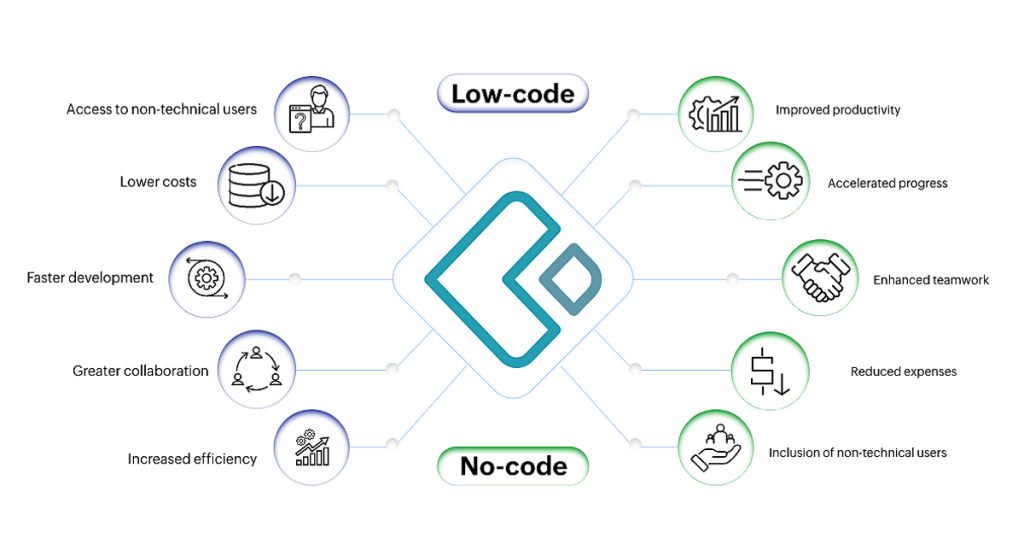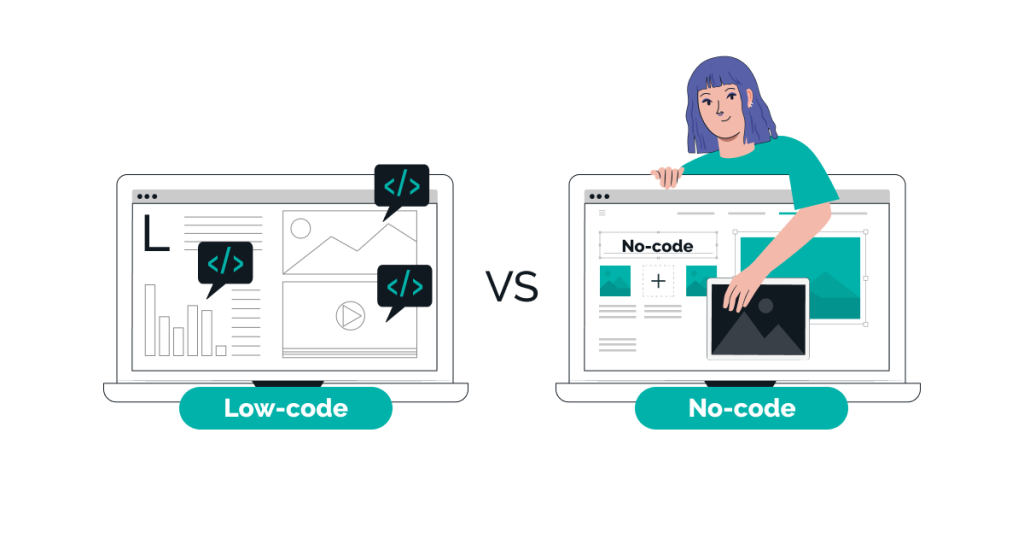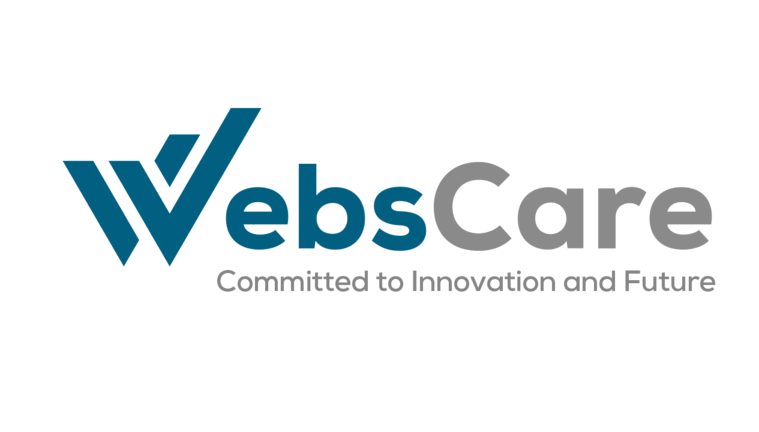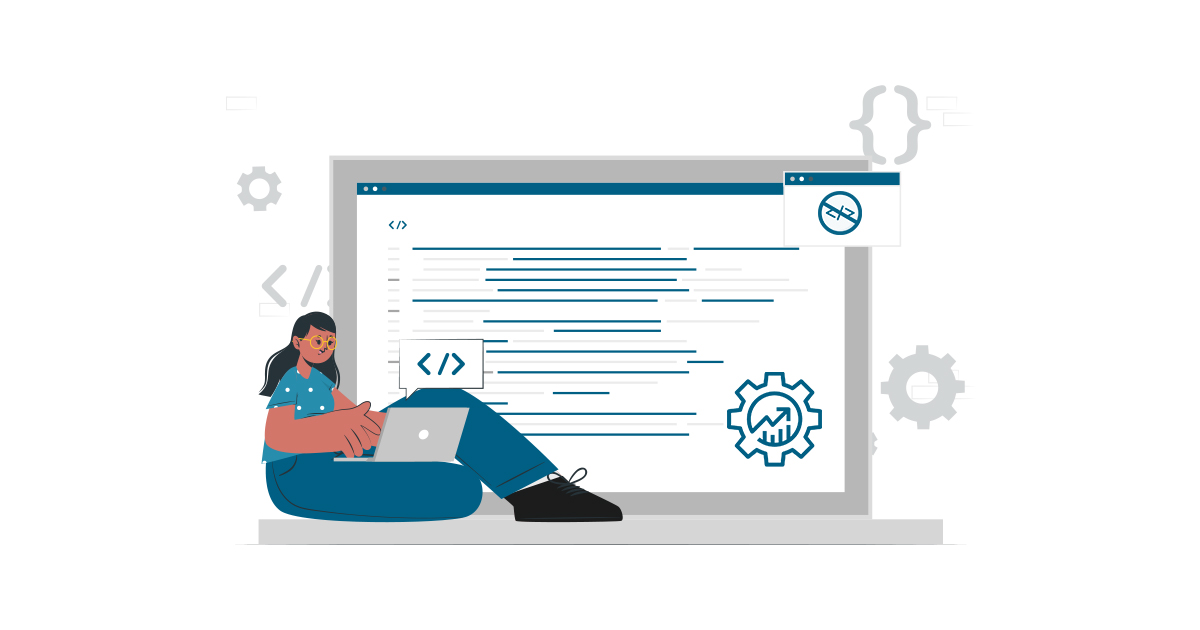Low-code and no-code development are significantly impacting Pakistani businesses by enabling faster app development, reducing reliance on scarce technical talent, empowering non-technical users to create custom solutions and allowing companies to quickly adapt to changing market needs especially for startups and small businesses with limited resources. Imagine building an app without writing a single line of code, or automating tasks to save time at work. Low-code and no-code platforms make this possible. Whether you are a developer or a business professional, these platforms can help turn ideas into functional software easily. From creating apps to streamlining workflows, these platforms reshape how businesses and individuals innovate. Our WebsCare research team will compile some reasons how Low-Code and No-Code Development are impacting Pakistani businesses.
Looking for expert web development services? Get in touch with us today!
What are Low-Code and No-Code Platforms?
No-code platforms are designed for non-technical users. They offer visual development environments and drag-and-drop tools to build applications without writing code. These platforms simplify the process, enabling business professionals from numerous departments to create functional apps without IT assistance. Low-Code Platforms while also simplifying development, require minimal coding and are better suited for developers working on more complex applications. These platforms enable the rapid creation of scalable, enterprise-grade solutions and streamline integration with other systems.
Low-code platforms offer a development environment that enables users to create apps with minimal hand-coding. Some level of coding knowledge is still required but tools like Microsoft PowerApps and Mendix mainly help reduce the amount of manual coding needed. Bubble and FlutterFlow are just two of many popular no-code platforms. Such tools are designed with complete amateurs in mind, allowing users with little to no coding experience to build apps using simple logic and templates and through visual interfaces.
Benefits of Low-Code and No-Code Platforms
Low-code and no-code platforms empower users to build applications quickly without extensive coding knowledge, streamlining development processes and increasing productivity.

Development
LCNC platforms significantly reduce development time. Applications that once took months to build can now be created in weeks
Cost Efficiency
Reducing the need for specialized coding experts lowers development costs. Businesses can allocate resources efficiently.
Enhanced Agility
With LCNC platforms, organizations can quickly adapt to changing market conditions, launch new features and respond to user feedback with ease.
Curious about how web development is shaping Pakistan’s digital future? Explore the revolution with us!
The Rise of Low-Code and No-Code Development in Pakistani Businesses
These platforms allow users with little to no programming knowledge to create applications, automate workflows and enhance business processes without needing extensive coding expertise. Here’s how LCNC development is impacting Pakistani businesses:

| Benefit | Description |
|---|---|
| Empowering Startups and Small Businesses | LCNC platforms like Bubble, Adalo, OutSystems, and Zoho Creator help startups build MVPs quickly without expensive development teams, especially in fintech, e-commerce, and SaaS. |
| Digital Transformation for Traditional Businesses | Tools like Zapier, Airtable, and AppSheet enable SMEs to digitize operations, automate processes, and manage customer data without full-scale IT teams. |
| Enhancing Efficiency in Large Enterprises | Corporations in banking, telecom, and manufacturing use LCNC tools to automate workflows, improve customer experiences, and reduce IT reliance. |
| Boosting Freelancers and Digital Agencies | Freelancers and agencies leverage LCNC platforms to offer no-code solutions, expanding their service portfolios for web and app development without deep coding skills. |
| Lowering Development Costs | LCNC platforms reduce the cost of traditional software development, enabling businesses to build applications at a fraction of the cost. |
Similarities Between No-code and Low-code Development
The similarities between low-code and no-code are surface level. Organizations can use either to:
Mainly, low-code and no-code platforms provide the means to build apps without writing code. With a visual approach, developers don’t need to understand various types of programming languages. In a Platform as a Service (PaaS) form factor, both options also remove the overhead of standing up environments and maintaining infrastructure. But that’s where the similarities between low-code and no-code end.
Differences between no-code and low-code
When it comes to use cases, low-code and no-code development have a key difference.

Complexities
No-code development is basic and used to create simple apps. Low-code development is more sophisticated and used to build any application
Target Audience
No-Code is designed primarily for business users and non-technical individuals who want to create applications without writing any code.
Coding Requirement
No code requires zero coding; all development is done through a visual interface. Low code requires minimal coding to enhance functionality.
Challenges to Consider
While LCNC platforms offer numerous advantages, they are not without challenges. Organizations may face limitations in customization, potential security concerns and difficulties in scaling complex applications. It is important to assess these factors and choose platforms that align with business goals. Here are some challenges to consider when adopting these platforms, mentioned as:
| Challenge | Description |
|---|---|
| Limited Customization and Scalability | Pre-built components limit flexibility in customizing business logic, and scaling applications for high traffic or large datasets may be difficult. |
| Vendor Lock-in | Proprietary platforms may require significant redevelopment to switch services, and dependence on one vendor can increase long-term costs. |
| Security and Compliance Risks | Less control over security and compliance with industry regulations (e.g., GDPR, HIPAA), and data storage/access controls may be weaker than custom-coded solutions. |
| Limited Integration Capabilities | Difficulty in connecting with external APIs or legacy systems, especially for complex data processing, with limited third-party integrations. |
| Performance Bottlenecks | Inefficient code generated by low-code/no-code applications can cause performance issues, especially in resource-intensive applications, with limited optimization. |
| Skill Gap and Learning Curve | Non-developers may still need training to understand logic, workflows, and business rules to use the platforms effectively. |
| Governance and IT Oversight | Non-technical users developing apps can create security risks, redundancies, and inefficiencies, requiring IT teams to establish governance and best practices. |
| Higher Long-Term Costs | While initial costs are low, subscription fees can become expensive, and migration to custom development can be costly and time-consuming. |
The Future of Low-Code and No-Code
The era of Low-Code and No-Code platforms is just beginning to unfold, and the potential is immense. As artificial intelligence and machine learning continue to advance, these platforms will become more intuitive and powerful, making it easier for users to create sophisticated applications without extensive coding knowledge. With enhanced capabilities such as predictive analytics, automated decision-making, and intelligent process automation, LCNC platforms will revolutionize how businesses approach app development. The integration of AI and ML will allow for smarter workflows, more accurate insights, and faster development cycles, ultimately increasing efficiency and reducing costs.
As the adoption of LCNC platforms grows across various industries, the scope of their use will expand beyond simple applications. Even complex enterprise applications, previously reliant on specialized developers, will be created using minimal coding, streamlining the development process. This shift will democratize application development, enabling business users, marketers, and other non-technical professionals to contribute to the creation of powerful tools and solutions. Over time, LCNC platforms will reduce the dependency on traditional software development, empowering businesses to innovate more rapidly and remain competitive in an increasingly digital world.
Searching for the best web development tools? Let’s find the top 8 tools to optimize your workflow and enhance productivity!
Conclusion
Finally, the era of Low-Code and No-Code Platforms has arrived. Now, it has been made easy for IT professionals and business users alike to create impact-driven applications. Low-Code and No-Code platforms have ushered in a new era of application development. By making it easier for IT professionals and business users to create impact-driven applications, these platforms are empowering organizations to innovate rapidly and stay competitive in the digital age.


